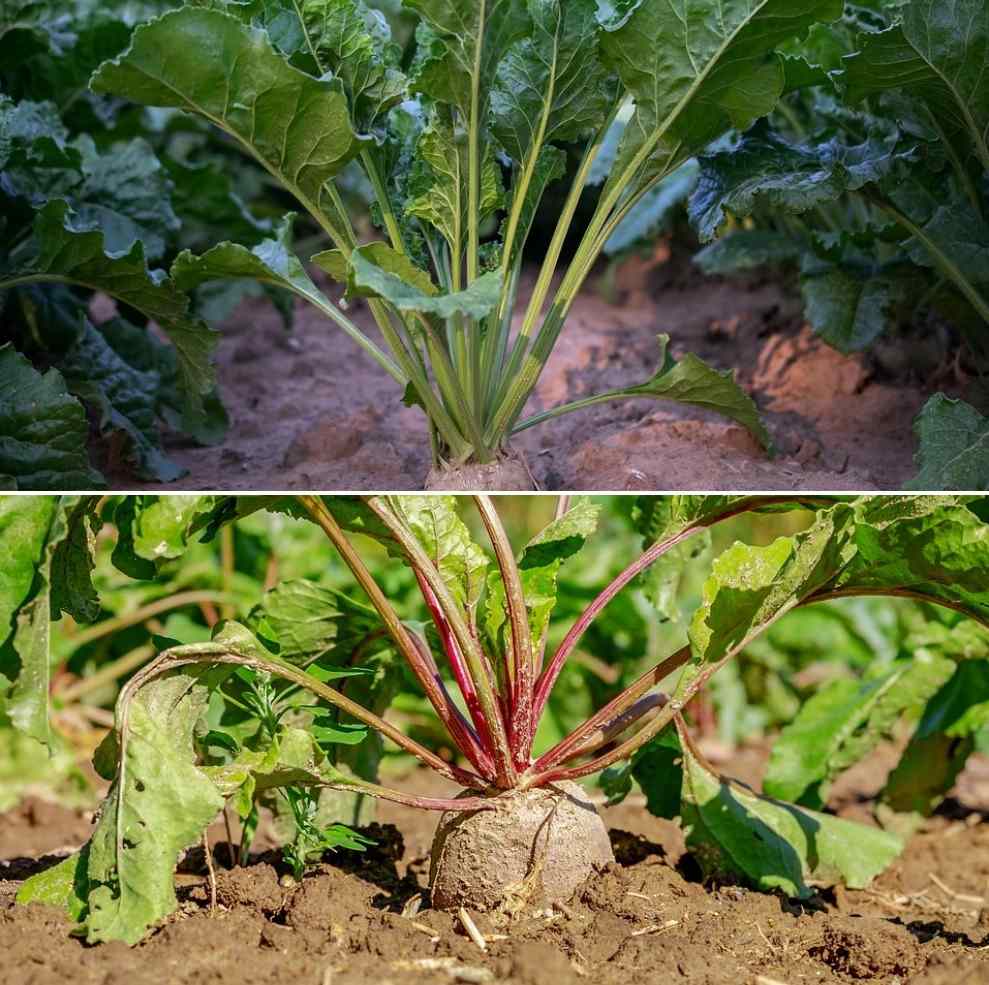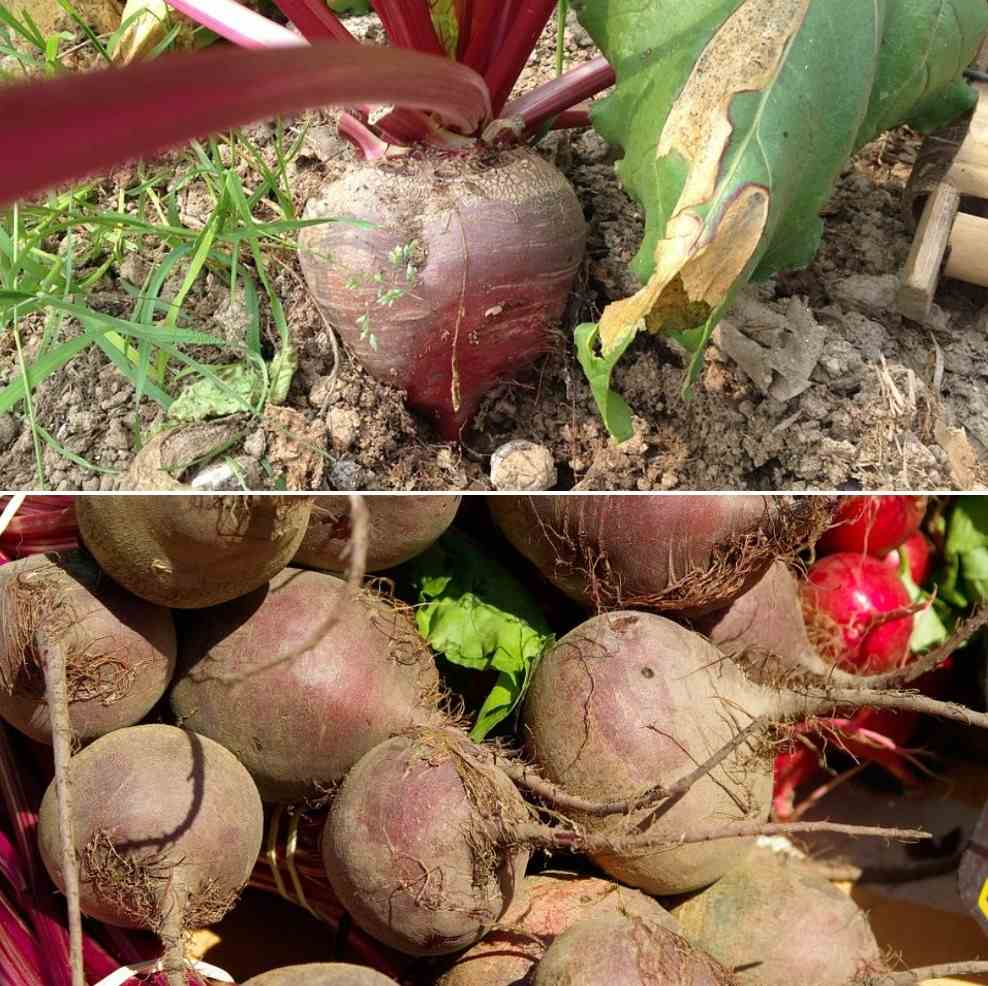Introduction: Hello farmers, we are here with a great information of Beetroot cultivation income, profits, yield and economics of the crop in 1 acre plantation. Beetroot is a popular vegetable and can be grown easily with good yield. Beetroot is an edible taproot and sugar can also be extracted from these beets which have many health benefits. This is mostly observed in high-quality beets and dark internal color. It is sweet, healthy vegetables rich in antioxidants. These antioxidants in Beetroot helps in protecting the heart and also prevent cancer. The scientific name of Beetroot is Beta vulgaris and belongs to the family Chenopodiaceae. It is an herbaceous biannual root vegetable and is cultivated mostly for the edible root. As the Beetroot is a rich source of phytonutrients, Vitamin B and C, and antioxidants it has high demand in the market and can be easily grown and is ranked as a top vegetable grown in the home.
A full guide to Beetroot cultivation Income and project report
How to grow Beetroot

For growing Beetroot in 1-acre land the following measures have to be taken to get maximum yield and in turn profits. The growing period is very short under favorable conditions i.e., 8-11 weeks.
Popular varieties of Beets
These include-
1.Crimson Globe- In this variety the growing period is very short which lasts about 2-3 months.
2.Detroit Dark Red- This variety is dark red which is known by its name and also can be harvested within 2-3 months after plantation.
- Red Ball- This is a unique variety where the Beetroot will be red ball-shaped and smaller in size. It can also be harvested within 2-3 months.
You should not miss the Bajra Cultivation Income, Project Report.
Essential climatic conditions for Beetroot crop
Beetroot is a cool-weather crop but it can also be grown in a moderately warm climate; but the best color, texture, and quality is attained in cool weather conditions. A temperature range of 18-21°C is ideal for Beetroot cultivation for obtaining good quality, rich in antioxidants and sugars, better yield, etc. If the temperature is below 10°C, the crop is prone to bolting.
Soil conditions suited for Beetroot plantation
Well-drained soils such as sandy loam are best suited for the cultivation of Beetroot. The soil pH should range from 6-7 for getting optimum yield.
Propagation and planting methods followed in Beetroot cultivation
The best time for planting Beetroot is from August to January. The land has to be deeply ploughed by incorporating a well-decomposed FYM of about 8 tons per acre. The seed rate ranges from 3-4 Kg per acre. Seeds have to be soaked for 12 hours before planting. This action facilitates and speeds up the germination process. Seed treatment has to be done with Thiram and Captan 2 g per Kg seed. Ridges of above 20 cm height are formed with a distance of 45 cm and the seeds are sown 20 cm apart on the rows. Light irrigation has to be given immediately after sowing the seeds. Plant every seed at 1-inch depth and each row are spaced 12-15 inches apart. The farmer has to select the quality seed which is resistant to diseases and attain stability. Based on this the yield, production of roots, quantity, and quality differs. Monsoon season is best for planting the seeds.
Irrigation procedure in Beetroot farming
If the irrigation is done properly then it leads to the development of root, speedy growth and also gives a good yield. Watering is necessary during the summer season as the plant needs excess water to develop the root. After that watering is done based on the soil moisture content at the required levels.
Moisten the soil in the Beetroot field frequently to get better results. A drip irrigation system is the better method and is proved to be beneficial. Over irrigation may cause bolting producing more flowers and the production of Beets might be reduced. Hence the irrigation should be provided based on soil moisture content and the crop requirement.
Process of adding fertilizers and manures
To the field with Beetroot cultivation, the N:P:K ratio should be maintained as 1:2.2:2.2. Adding organic manure to the field produces good results and helps in the growth of the Beet to its maximum size and the plant may also become resistant to few weeds, diseases, etc. The soil should be tested for the presence like Boron; in case of any deficiency of Boron, the growth of the root may result in splitting internally. For this kind of soils, Boric acid or Borax is added to the soil.
Controlling measures of pests and diseases
The pests like Red Spider, Aphids, Flea Beetle, and Leaf eating insects can be controlled by spraying 2 ml of Malathion 50 EC per 1 liter of water. Diseases like Leaf Spot, Brown Rust, Damping off, Downy Mildew, Root Rot, Scab, etc are controlled by spraying Mancozeb or Carbendazim 2g per liter of water. This also can be minimized by selecting a diseased free high yielding variety of Beetroot seeds. Seed treatment before planting gives better results and shows resistant to these diseases and pests.
How and when to harvest Beets
Harvesting is done manually but mechanical means are also available in the market. Usually, harvesting is done after 2-3 months based on the time of planting the seeds. Harvesting can also be done if the plant reaches 10 cm in height. Harvest only quality roots that are dark red with a diameter of 8 cm. In two months of planting beets a bulbous root of 3 cm in diameter is grown, this has also good demand in the market which is used for salad purposes. This harvesting of roots provides space and time for the other Beets to grow well with larger and dark red. After harvesting the Beets, they are cleaned with freshwater and are separated into three categories based on the size attained. These are stored in wooden boxes.
You may also like the Tamrind Cultivation Income, Project Report.
The yield of Beetroot per acre
Farmers can easily achieve a root production of 15-20 tons per acre in the shortest period i.e., 2-3 months. The proper management in the farm, proper care, and suitable practicing methods leads to higher yields. It has high demand in the local markets as this vegetable is popularly known as ‘zero-calorie vegetable’. Hence, these have a high demand in the local markets. The smaller Beets with dark red color have high demand in the market than the larger ones.
Proejct report and economics of Beetroot farming in 1 acre of land

Land preparation = Rs. 10,000
Seeds cost = Rs. 5,000
Manures and fertilizers= Rs. 10,000
Plant protection= Rs. 5,000
Irrigation = Rs. 20,000
Labour Charges = Rs. 15,000
Miscellaneous cost = Rs. 3,000
10% of total cost = Rs. 6,800
Total cost = Rs. 74,800
Beetroot cultivation income returns
The Farmgate price per 1 Kg of Beetroots – Rs. 8 per Kg. The yield will be 15 tons per acre. So income per 1 acre of Beetroots = 8 x 15000= Rs. 1,20,000.
Profit analysis in Beetroot crop
Profit = Income- Total cost incurred = Rs. 1,20,000 – Rs.74,800 = Rs. 45,200 per acre. Hence, the profit is Rs. 45,200 per acre.
The conslusion of Beets farming is with proper care and cultivation practices, one can get good returns. Hope you enjoyed reading the article of Beetroot cultivation income and yield per acre.
You may be interested in Growing Broad Beans at Home.
Good informations
I have started growing beetroot in Tanzania. How 4 acres planted by 31st December,2020 and harvested expected from the last week of February , 2021.
How can I supply the beets in SA markets???
I want to start planting beetroots but l don’t know where to purchase the seedlings. I am based in Lake-zone region- Tanzania.Please help.
Can beetroot be exported
Is it marketable internationally
Thanks